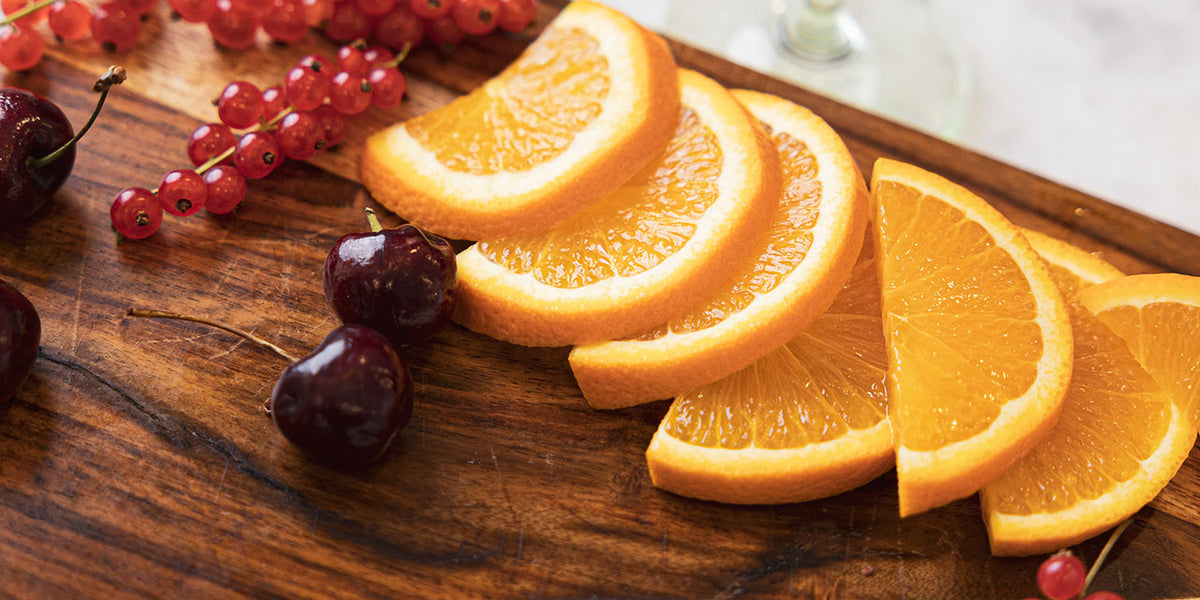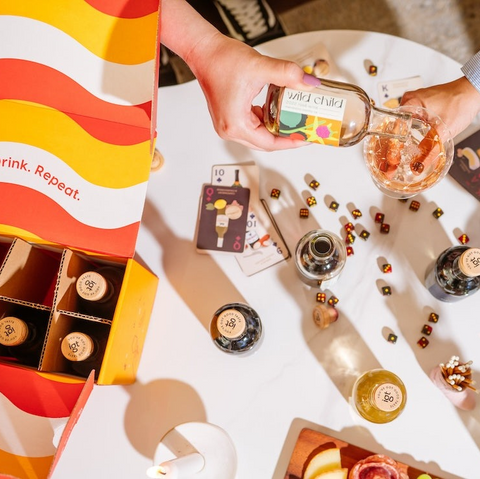What is Orange Wine?
When talking about wine, there’s no shortage of new things to learn about. Just when you think you’ve mastered the basics of reds, whites, and even rosés - boom! - there’s a new wine in town to discover. Wine lovers from near and far, let us introduce you to the funky, fun, and oft-misunderstood orange wine.
Remember that friend in high school that went off to college and came back with, shall we say, a deeper sense of their natural self? You recognize them, yes, but now they wear funky clothes, drink kombucha, and have developed an affinity for alternative music. This is the human equivalent of orange wine. It’s still a wine just like any white or red, however, it has unique characteristics that make it stand apart from the rest, both in color and in taste.
Orange Wine Production
The secret to the distinct color and flavors of orange wine is all in the production. Although it may sound like orange wine is made with some orange grape mutation or with actual oranges, it’s actually made with common varietals of white grapes.
Some refer to the production of orange wine as being more natural, because the process itself is old and very traditional, so it is seen as more “natural” compared to some modern wine production. It also requires no additives or preservatives to keep the wine from going bad. To better understand the process as a whole, let’s hop into the wine time machine and look at the history of orange wine.
History
The process of making orange wine is ancient. We’re talking approximately 8,000 + years ago ancient. The technique originates from the Eastern European country of Georgia. The process involves taking white wine grapes, crushing them, putting them in a large, ceramic vessel called a qvevri with the skin and seeds still in contact, then sealing the qvevri with beeswax and letting the product ferment underground anywhere between four days and one year. Leaving the skin and seeds intact is what gives the wine its distinctive orange hue.



Resurgence
Prior to the early 2000’s, orange wine was not widely known outside its country of origin, that is, until Italian winemakers visited Georgia and decided to bring the techniques and a few qvevris back with them. In 2004, the term “orange wine” was coined by a British importer, David Harvey. Since then, it has become more and more popular, with some winemakers even predicting that orange wine will become the new rosé. Orange wine is still somewhat rare to find in the United States, however, as more wine lovers discover this unique vino, it is becoming easier to snag a bottle in the store or online.
Orange Wine vs. White and Rosé Wine
Now we know that orange wine gets its unique color from the way that it’s produced. High five on learning something new today! But now the question remains, how is orange wine different from white wine or a rosé?
One way that’s helpful to distinguish between an orange wine and a white wine is this - orange wine is basically a white wine that’s made like a red wine. White wine grapes have little to no contact with the grape skins before they are processed, while red wine grapes are made with the skins left on, which is what gives them their color.
Orange Wine

White Wine

Red Wine

Rosé Wine

Orange wines are made with white wine grapes such as Pinot Gris, Sauvignon Blanc, Riesling, Chenin Blanc, Moscat Ottonel, and others, but leaving the skins on gives it a much different color and flavor profile. Orange wines have a fuller body and funkier notes than most white wines. Because the skins are left on during production, orange wines are also more tannic than whites. The skins are where tannins come from, which is also why red wines are more tannic than white wines. These tannins allow orange wines to age much longer than white wines as well, anywhere from a few years to a couple of decades.
What about the difference between orange wine and rosé? Rosé can get its pinkish, champagne hue from a couple of different methods. It is typically made from red wine grapes with color attributed to minimal skin contact, or less commonly may be a blend of white and red wines. The production process is not quite the same as an orange wine. Additionally, orange wines have a bolder flavor and fuller body than most rosés. Orange wines and rosés do have one thing in common though - they aren’t afraid to show off their stylish color, and we love them for that.
How to Serve Orange Wine
Are you convinced that you need to try orange wine ASAP? We don’t blame you! With such an intriguing history and unique flavor, who wouldn’t? Let’s take a look at the best ways to enjoy orange wine so that you can incorporate it into your wine collection.
Temperature and Glass Type
Depending on the body of the orange wine, it is typically best served below room temperature. Lighter orange wines taste best almost chilled, while fuller-bodied orange wines will shine at a cool temperature, somewhere between room temperature and chilled. When looking for a glass, orange wines will do best in a white wine glass, which usually has a more narrow bowl than a red wine glass. Unlike red wines, orange wines don’t need as much room to breathe to showcase the full range of their flavorful notes.

Foods to Pair with Orange Wine
The bold flavors of an orange wine pair well with equally bold flavors in food. Look for spicy, fermented dishes like kimchi, or curry, put together some cured meats and cheeses on a charcuterie board, or pair with hearty-tasting foods such as red meat and mushrooms. You also can’t go wrong with traditional Japanese cuisine or fall flavors such as squash and pork.

See, Smell, and Tasting Notes
Orange wines are, not surprisingly, easily recognized by their unique color, which can range from a light, honeyed amber to a bold, tiger orange. Lighter hues will usually indicate a lighter body, while a darker orange typically points to a fuller body with bolder flavors.
On the nose, orange wine typically has bright, sweet aromas with scents of lemongrass, clover honey, and stone fruits like apricots.
The taste of orange wine is unlike any white, red, or rosé you’ve ever encountered. Its high tannin content gives it a fuller body, and it’s described as having honeyed notes that are nutty, with hints of bruised fruit, dried flowers or hay, juniper, sourdough, and orange rind. Many even describe orange wines as being similar to a sour fruit beer, and is a good choice as an introduction to wine for those that describe themselves as being “more of a beer person”. Orange wine may just be the perfect gateway beverage for those wine non-believers!
For those nights where a glass of red or white just isn't cutting it, consider trying out a bottle of tangy, tantalizing orange wine. With a process that’s been perfected over the course of over 8,000 years, it’s safe to say that orange wines are a time-tested beverage. If you come across a bottle of this unique vino while on the hunt for a new wine to try, you may want to give it a go! Now, you are basically an expert on all things orange wine… orange you glad?




